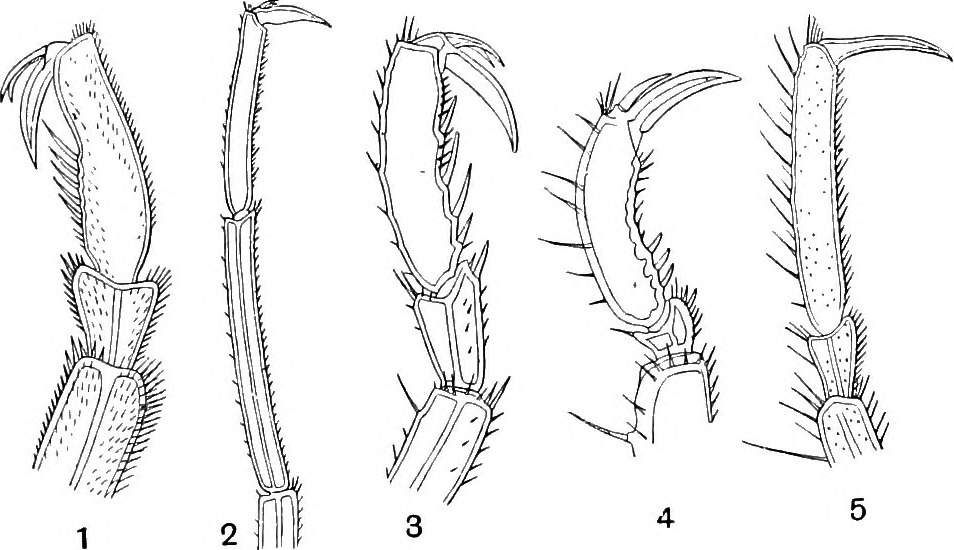|
Haliestes
''Haliestes'' is a genus of sea spider (pycnogonid) from the Silurian aged Coalbrookdale Formation of England. It contains a single species, ''Haliestes dasos''. The species was first described by David Siveter et al. in 2004. Morphology ''Haliestes'' is a tiny sea spider measured only up to 5.7 mm in body length. Ocular tubercle is evident at the front, but it is unknown if it bore eyes or not. The tubular proboscis facing ventrally below its cephalon. The trunk segments are narrowed. The reduced abdomen was divided by 3 tiny segments. All appendages are well developed. The chelifores featured a robust, upward-facing pincer, connected to the front by a 2-segmented scape. The palps and ovigers are subequal to each other, each possess 9 segments and a hooked terminal claw. The 8 legs are over twice of its body length, sharing some traits with the younger Hunsrück pycnogonids (e.g. ''Palaeoisopus'', '' Pentapantopus'') such as annulated coxa 1, paddle-like segments lined with ... [...More Info...] [...Related Items...] OR: [Wikipedia] [Google] [Baidu] |
Sea Spider
Sea spiders are marine arthropods of the class (biology), class Pycnogonida, hence they are also called pycnogonids (; named after ''Pycnogonum'', the type genus; with the suffix '). The class includes the only now-living order (biology), order Pantopoda ( ‘all feet’), alongside a few fossil species which could trace back to the early or mid Paleozoic. They are cosmopolitan distribution, cosmopolitan, found in oceans around the world. The over 1,300 known species have leg spans ranging from to over . Most are toward the smaller end of this range in relatively shallow depths; however, they can grow to be quite large in Antarctic and deep-sea gigantism, deep waters. Despite their name and brief resemblance, "sea spiders" are not spiders, nor even arachnids. While some literature around the 2000s suggests they may be a sister group to all other living arthropods, their traditional classification as a member of chelicerates alongside Xiphosura, horseshoe crabs and arachnids has r ... [...More Info...] [...Related Items...] OR: [Wikipedia] [Google] [Baidu] |
Pycnogonid Genera
Sea spiders are marine arthropods of the class Pycnogonida, hence they are also called pycnogonids (; named after ''Pycnogonum'', the type genus; with the suffix '). The class includes the only now-living order Pantopoda ( ‘all feet’), alongside a few fossil species which could trace back to the early or mid Paleozoic. They are cosmopolitan, found in oceans around the world. The over 1,300 known species have leg spans ranging from to over . Most are toward the smaller end of this range in relatively shallow depths; however, they can grow to be quite large in Antarctic and deep waters. Despite their name and brief resemblance, "sea spiders" are not spiders, nor even arachnids. While some literature around the 2000s suggests they may be a sister group to all other living arthropods, their traditional classification as a member of chelicerates alongside horseshoe crabs and arachnids has regained wide support in subsequent studies. Morphology Many sea spiders are recognised ... [...More Info...] [...Related Items...] OR: [Wikipedia] [Google] [Baidu] |


